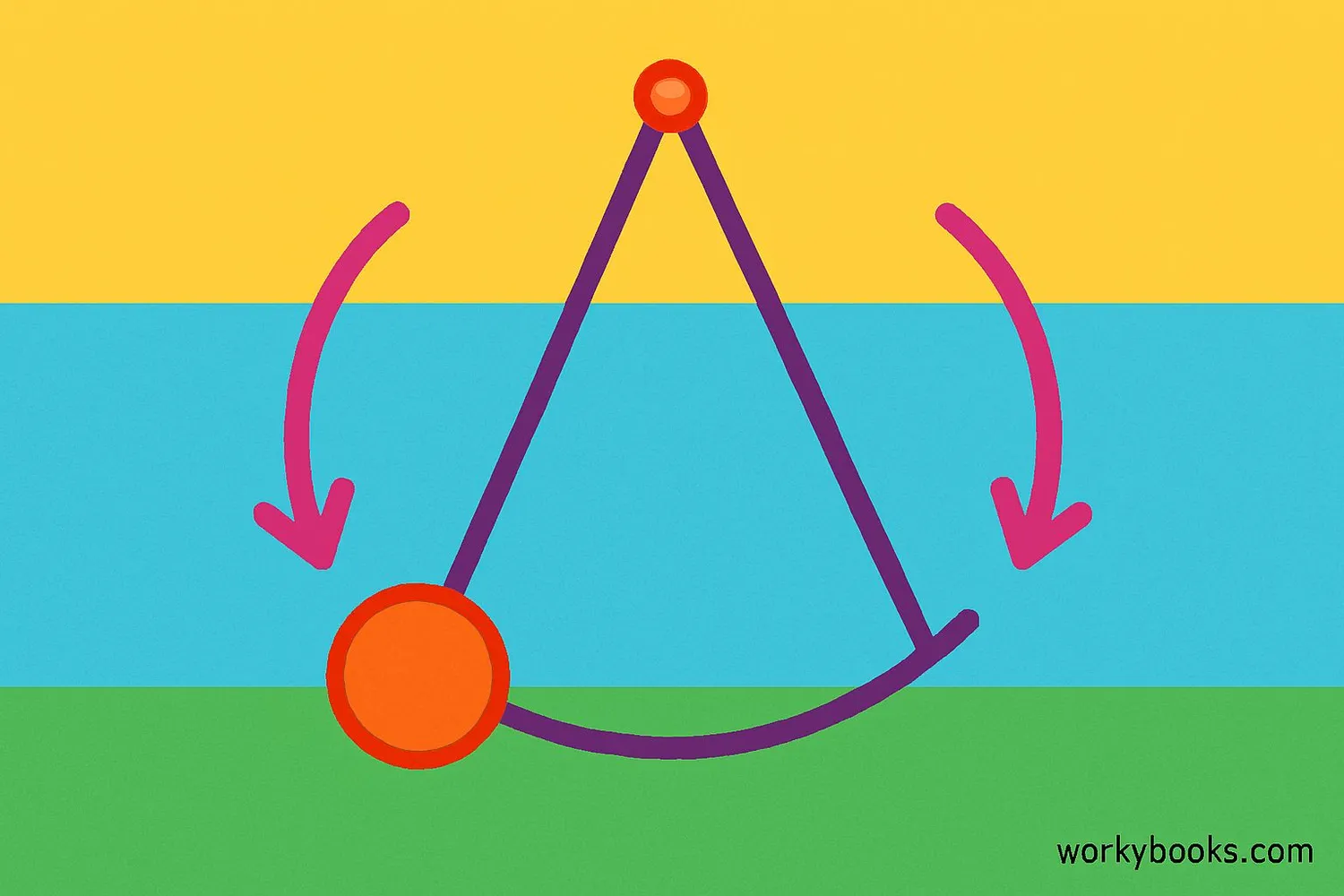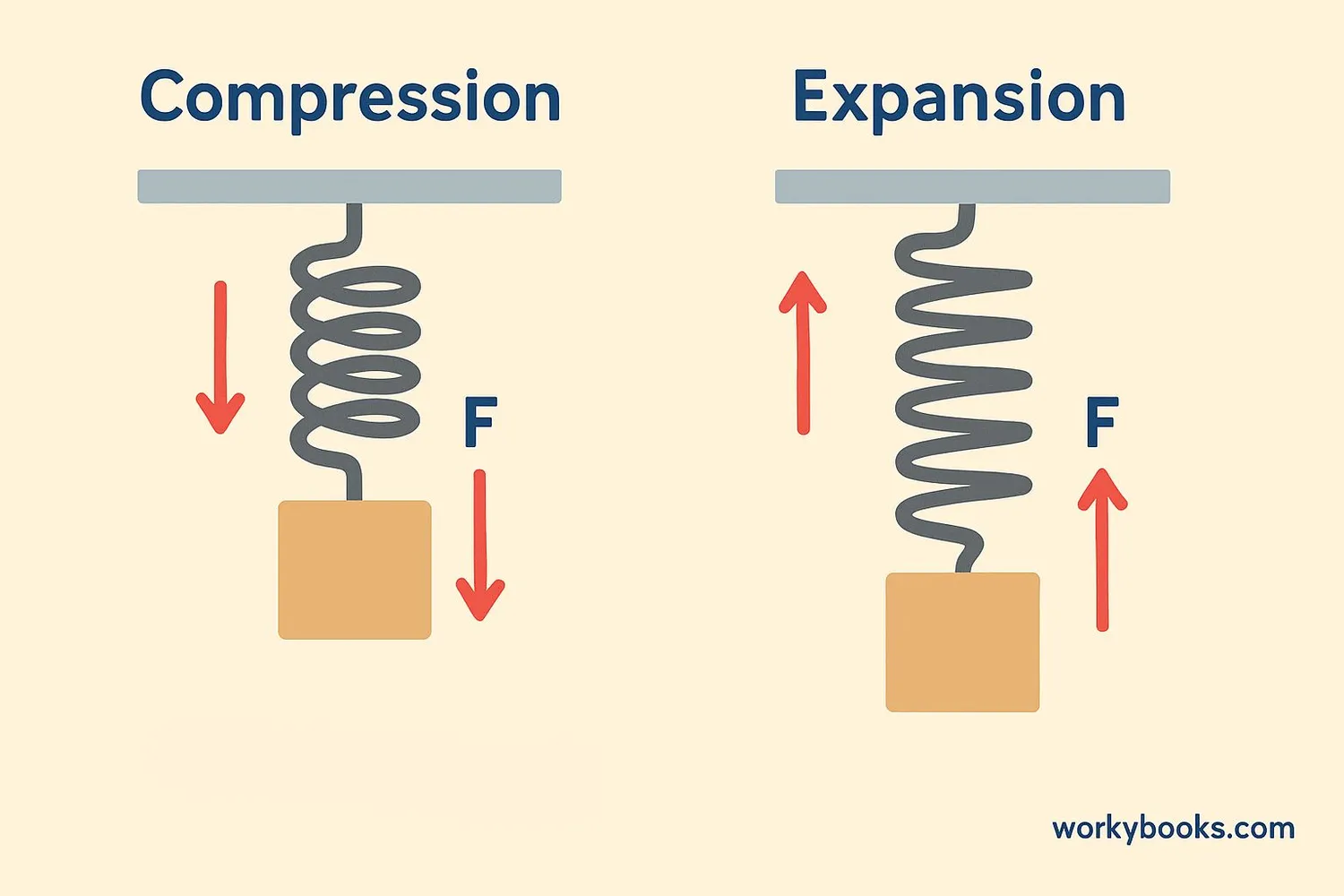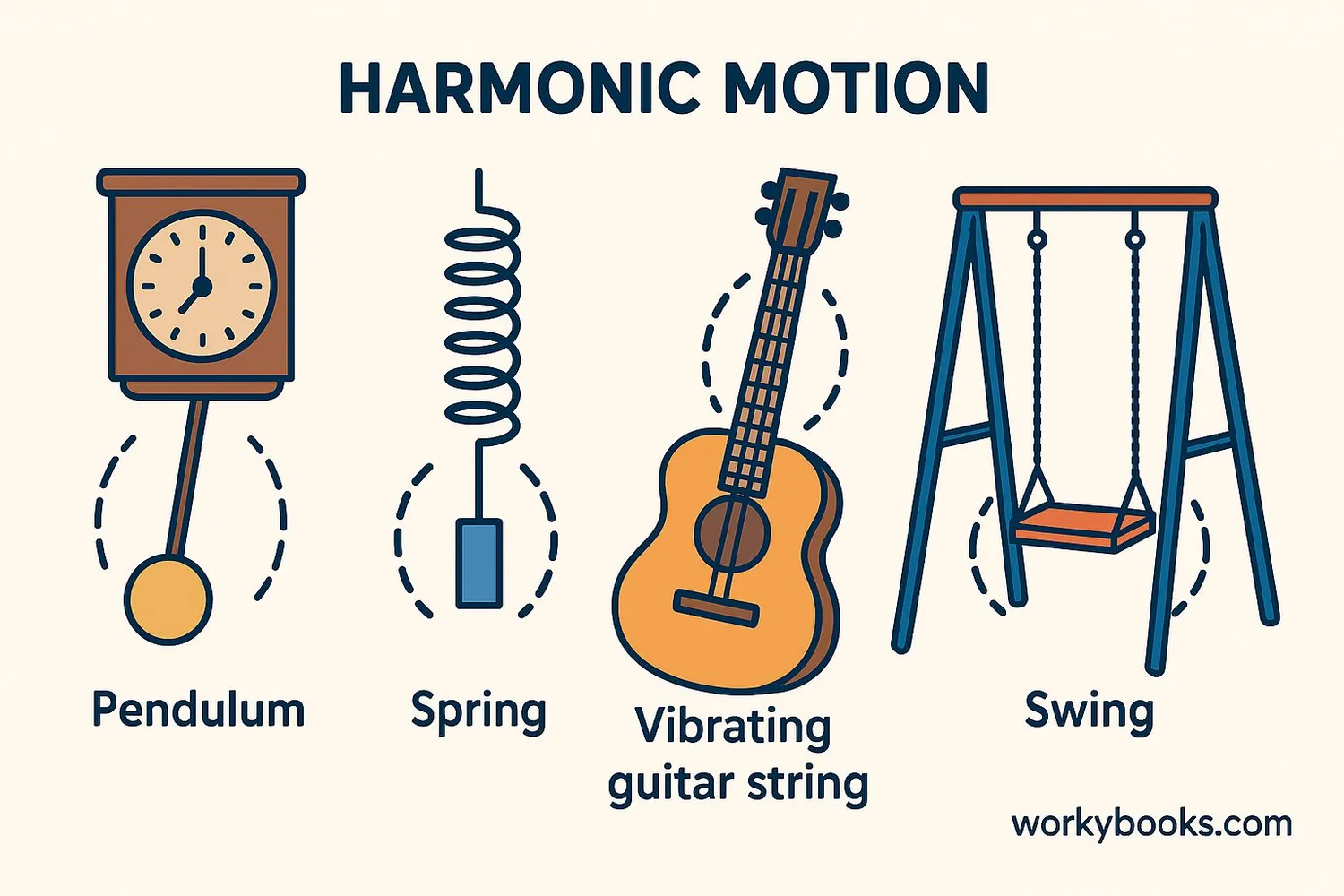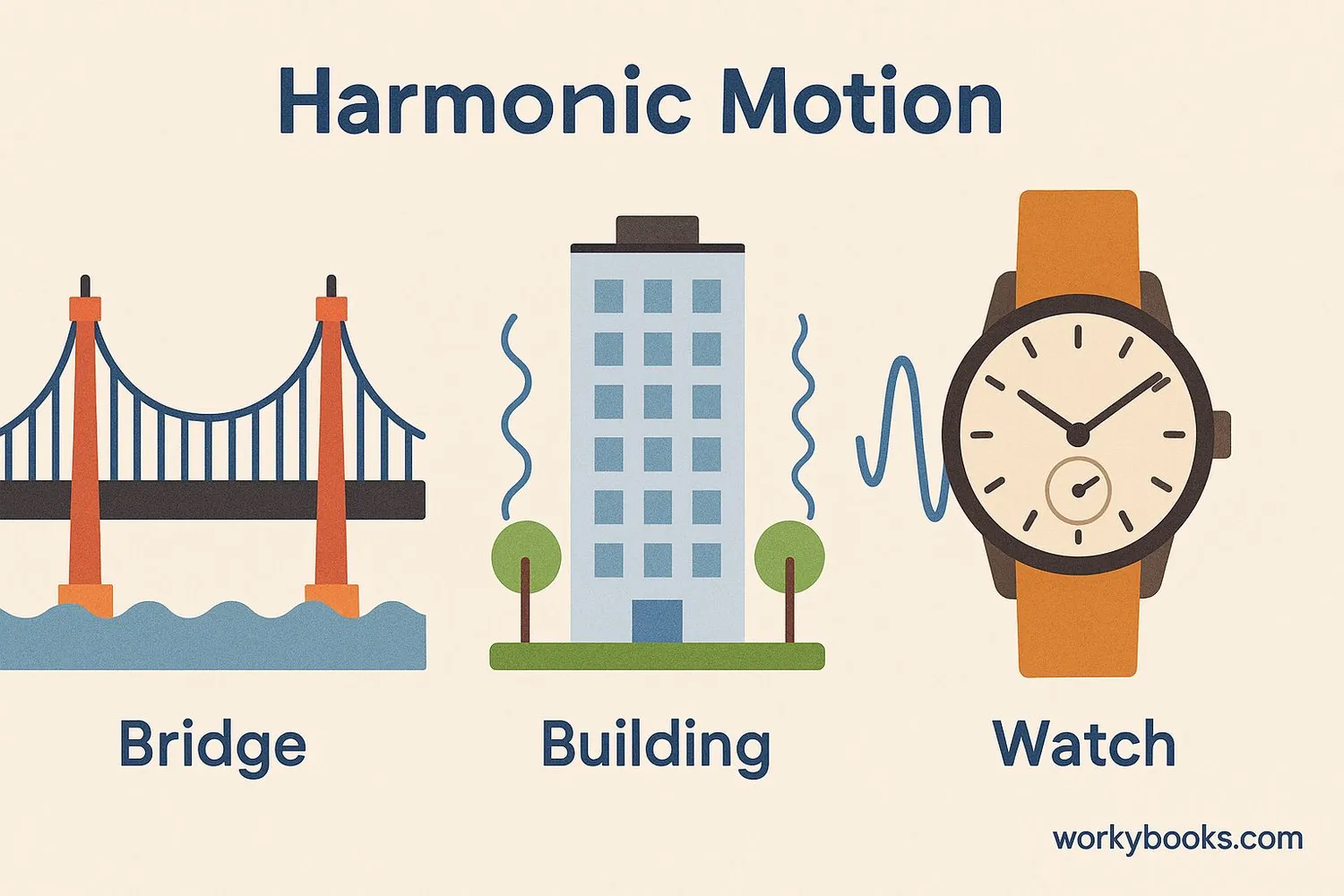Harmonic Motion - Definition, Examples, Quiz, FAQ, Trivia
Discover the back-and-forth motion that powers our world!
What is Harmonic Motion?

Harmonic motion is a special type of back-and-forth movement that happens when something is pulled toward a center point and then released. It's the kind of motion you see when a pendulum swings or a spring bounces.
Think of it like a swing on a playground! When you push the swing, it goes forward, then backward, then forward again. This repeating pattern is what we call oscillation. Harmonic motion follows a predictable, smooth pattern that can be described with mathematical equations.
Motion Fact!
Simple harmonic motion is a type of periodic motion where the restoring force is directly proportional to the displacement.
How Harmonic Motion Works

Harmonic motion works because of a special property called the restoring force. This is a force that always pulls the object back toward its resting position. The farther the object moves away, the stronger the restoring force pulls it back.
Displacement
The object moves away from its resting position
Restoring Force
A force pulls the object back toward the center
Overshoot
The object moves past the center due to momentum
Return
The restoring force again pulls it back toward center
Repetition
The cycle repeats, creating oscillatory motion
The special formula for simple harmonic motion is:
Where F is the restoring force, k is a constant, and x is the displacement from the equilibrium position. The negative sign shows that the force is always opposite to the direction of displacement.
Periodic Motion!
The time it takes to complete one full cycle of motion is called the period. For a pendulum, the period depends on its length, not on how heavy the bob is!
Examples of Harmonic Motion

Harmonic motion is all around us! Here are some common examples you might recognize:
Pendulum Clocks
The swinging pendulum keeps accurate time through regular harmonic motion
Musical Instruments
Guitar strings, drum heads, and other instruments vibrate with harmonic motion
Car Suspensions
Springs in car suspensions use harmonic motion to smooth out bumps in the road
Other examples include:
• A child swinging on a swing set
• A mass bouncing on a spring
• The vibrating prongs of a tuning fork
• Buildings swaying gently in the wind
• Atoms vibrating in a crystal structure
Why Harmonic Motion is Important

Understanding harmonic motion helps scientists and engineers in many important ways:
Timekeeping
Pendulum clocks and quartz crystals in watches use harmonic motion to keep accurate time
Earthquake Engineering
Buildings are designed to handle harmonic motion during earthquakes
Electronics
Circuits use oscillating currents that follow harmonic motion principles
Harmonic motion is also fundamental to:
• Understanding sound waves and music
• Designing vehicles with comfortable suspensions
• Creating accurate scientific instruments
• Studying atomic and molecular behavior
• Developing medical imaging technology like MRI machines
Harmonic Motion Quiz
Test your harmonic motion knowledge with this quiz! Answer all 5 questions to see how much you've learned.
Frequently Asked Questions
Here are answers to some common questions about harmonic motion:
Fun Harmonic Motion Trivia
Discover some amazing facts about harmonic motion!
Galileo's Discovery
Galileo Galilei discovered the properties of pendulum motion in 1583 while watching a swinging lamp in Pisa Cathedral. He timed the swings using his own pulse!
Resonance Disaster
The Tacoma Narrows Bridge collapse in 1940 was caused by harmonic motion. Wind created oscillations that matched the bridge's natural frequency, causing it to sway violently and eventually collapse.
Precision Timekeeping
The most accurate clocks in the world use harmonic motion of atoms! Atomic clocks use the vibration frequency of cesium atoms to keep time with incredible precision.
Musical Harmony
The harmonic motion of strings and air columns creates musical notes. The specific frequencies of harmonic motion determine whether sounds are harmonious or dissonant to our ears.


